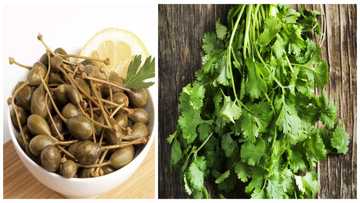Throwback Thursday: How Slaves Used Cornrows Hairstyle as Maps to Escape
While cornrows have become a crowd favourite for women of every culture in the last 10 years, not so many people are familiar with the deep and rich history of the hairstyle that saved the lives of many.
PAY ATTENTION: Click “See First” under the “Following” tab to see YEN.com.gh News on your News Feed!
Cornrows which consists of braiding the hair very close to the scalp in an underhand, upward motion in order to create a single line of raised row, creating the cornrow, have long been a facet of African beauty and life.
How slaves conveyed messages using cornrows
During the Transatlantic Slave Trade, many slaves were made to shave their hair for sanitary reasons. However, there were some slaves who in a bid to appear clean without cutting their hair, braided their hairs tightly in cornrows.
Slaves began to use cornrows to transfer and create maps to leave plantations and the home of their captors.
According to Face2faceafrica.com, since slaves were hardly given any writing material, they used cornrows to convey messages.
Download YEN's news app on Google Play now and stay up-to-date with all major Ghana news
The site explains:
"No one would question or think that one could hide entire maps in their hairstyle, so it was easy to circulate them without anyone finding out about it."

Source: Getty Images
Slaves hid gold in the braids
Afro-Colombia, Ziomara Asprilla Garcia, further explained to the Washington Post in the article, Afro-Colombian women braid messages of freedom in hairstyles:
“In the time of slavery in Colombia, hair braiding was used to relay messages. For example, to signal that they wanted to escape, women would braid a hairstyle called departes. “It had thick, tight braids, braided closely to the scalp and was tied into buns on the top.
"And another style had curved braids, tightly braided on their heads. The curved braids would represent the roads they would [use to] escape. In the braids, they also kept gold and hid seeds which, in the long run, helped them survive after they escaped.”
Today, cornrows have become widely accepted around the world and are a great fit for all ages, tastes, and lifestyles.
However, the history of how it came about will never be forgotten.
Lady with extremely tight braided hairdo causes stir
Photos of a lady sporting a really tight braided hairdo have left social media users buzzing with mixed feelings.
While every lady appreciates a neatly-done braided hairstyle, it appears there's no limit to how far and how much pain a woman is willing to bear in order to get the perfect hairstyle.
Hair blogger, @nigerianbraids, recently took to their page to share some photos of a lady with an extremely tight - and presumably painful - braided hairdo.
Our manifesto: This is what YEN.com.gh believes in
Source: YEN.com.gh

Linda Anderson Linda is a graduate of the Kwame Nkrumah University of Science and Technology (KNUST) in 2017 where she studied Chemical Engineering. She made an interesting career pivot from a Quality Control Officer to a Human Interest Editor in pursuit of doing what she loves and currently has close to 2 years experience in Journalism. Linda believes in kindness, respect, and empathy towards all and is firmly on board to help Yen.com.gh achieve all its set targets and goals.

Aba Afful (Copyeditor) Maame Aba serves as a copy editor at YEN.com.gh. She naturally enjoys working with words and has an eye for quality content. She has a keen interest in cyberspace and wants to see YEN.com.gh produce more impactful, thought-provoking, and error-free content. Aba has five years of experience as a content writer, blogger, author, and proofreader. She graduated from the Ghana Institute of Journalism in 2017. She joined the team in 2021.


